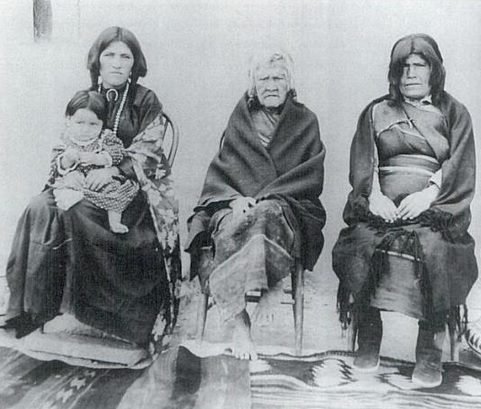Matriarchy: A Historical and Cultural Perspective

Matriarchy, a system where women hold primary power in leadership, inheritance, and family structure, has long fascinated scholars and anthropologists. Unlike the patriarchal societies that dominate today’s world, matriarchal systems have existed in various ancient civilizations and persist in some tribal communities around the globe. This article explores the history of matriarchy, its roots in ancient cultures, its presence in tribal societies, and its relevance in contemporary discussions.
Matriarchy is often misunderstood as merely the opposite of patriarchy. However, matriarchal societies are typically characterized by balance rather than dominance. They emphasize community, cooperation, and the pivotal role of women in governance and cultural continuity. In these societies, women’s roles often extend beyond family responsibilities to include religious, economic, and political leadership.
The Minoan Civilization (Crete)
The Minoan civilization, flourishing between 3000 and 1100 BCE on Crete, is frequently cited as an example of a matriarchal society. Archaeological findings, including frescoes and figurines, suggest that women held significant societal and religious roles. Artifacts like the Snake Goddess figurines indicate the worship of female deities associated with fertility and renewal. The Minoans’ social structure appears to have been centered around women, with practices such as matrilineal inheritance and goddess reverence.
The Indus Valley Civilization
The Indus Valley Civilization (3300–1900 BCE), spanning modern-day India and Pakistan, also hints at matriarchal traditions. Terracotta figurines depicting goddesses point to a culture that revered the feminine principle. Although little is known about their political organization, the prominence of female iconography implies that women played vital roles in spiritual and possibly societal leadership.
The Iroquois Confederacy
The Iroquois Confederacy, an alliance of Native American tribes in North America, practiced a matriarchal system that lasted well into the modern era. Clan mothers wielded significant authority, including the power to select and remove male leaders. Property and inheritance were passed through the female line, ensuring women retained economic and social control in their communities.
Egyptian Civilization
While ancient Egypt was largely patriarchal, certain periods reflected strong matriarchal influences. Queens such as Hatshepsut and Cleopatra wielded immense power, and goddesses like Isis were central to Egyptian religion. This reverence for women highlights their cultural importance in governance and spirituality.
India is home to several tribal communities that follow matriarchal or matrilineal systems. These societies offer insights into matriarchy’s resilience despite external influences.
The Khasi community in Meghalaya is one of India’s most prominent matrilineal societies. Lineage and inheritance are traced through the female line, with the youngest daughter traditionally inheriting family property. Women play central roles in household decisions, while men often adopt supportive roles. Despite modernization, the Khasi have preserved their matrilineal structure, emphasizing women’s importance in maintaining familial and cultural continuity.
The Garo tribe, also from Meghalaya, practices matrilineality, where property is inherited by the youngest daughter. Women’s roles extend beyond inheritance to include participation in community rituals and ceremonies. The Garo’s practices exemplify a harmonious gender balance, with men contributing to administrative and political affairs.
On Minicoy Island in Lakshadweep, a matrilineal system governs social organization. Property and lineage are passed through women, and maternal uncles often play key roles in family decision-making. This system underscores the respect and authority women hold within the community.
Historically, the Nair community in Kerala followed a form of matriliny known as “Marumakkathayam.” In this system, property was inherited through the female line, and joint family structures, or “tharavads,” were managed by women. Though societal changes have reduced this practice, its historical significance highlights the cultural prominence of women in Kerala’s history.
The Mosuo (China)
Known as the “Kingdom of Women,” the Mosuo people of China follow a matrilineal system. Women head households, and property is passed down through the female line. Relationships often follow a “walking marriage” system, where partners do not cohabit, and children remain with their mothers.
The Akan (Ghana)
The Akan people of Ghana practice matrilineality, where inheritance and succession are determined through the maternal line. Women, particularly grandmothers and mothers, hold significant authority in family and community matters, reinforcing the value of female leadership.
The Minangkabau (Indonesia)
The Minangkabau of Indonesia are the world’s largest matrilineal society. Women inherit ancestral property, while men often leave their matrilineal homes to work or marry. Despite modernization, the Minangkabau have maintained their cultural identity, blending Islamic practices with traditional matrilineal customs.
Though patriarchal systems dominate today’s world, principles of matriarchy persist in various forms. Feminist movements, gender equality initiatives, and the reevaluation of traditional power structures draw inspiration from matriarchal societies. These systems challenge the belief that power must equate to dominance, offering models based on cooperation, inclusivity, and respect.
Matriarchal societies are often mischaracterized as utopian or impractical. However, like any social system, they face challenges such as internal conflicts and external pressures. Colonization, globalization, and the spread of patriarchal religions have marginalized many matriarchal systems. Preserving and understanding these societies requires a nuanced appreciation of their complexities and contributions.
The study of matriarchy opens a fascinating window into a lesser-explored aspect of human civilization, questioning the long-standing dominance of patriarchal narratives in history and social structures. By delving into matriarchal systems, both past and present, we discover unique approaches to leadership, community life, and social organization that emphasize balance, mutual respect, and harmony over control and hierarchy.
Matriarchal systems are often misunderstood as simply flipping patriarchal dominance on its head, but they are far more nuanced than that. These societies focus on shared leadership, collective decision-making, and the pivotal role of women in preserving cultural and spiritual traditions. Far from being limited to domestic responsibilities, women in matriarchal communities have historically played key roles in governance, economics, and religion, breaking stereotypes and redefining the boundaries of leadership and influence.
In ancient civilizations such as the Minoans, Indus Valley societies, and the Iroquois Confederacy, matriarchy manifested through the worship of goddesses, matrilineal inheritance, and women’s leadership roles. These cultures understood the interconnectedness of life, symbolized by the feminine principle, which was celebrated as a source of fertility, renewal, and wisdom. By placing women at the center of societal structures, these civilizations demonstrated that leadership could be inclusive, nurturing, and just.
Tribal communities in India, such as the Khasi, Garo, and Minicoy Islanders, along with matrilineal societies around the world like the Mosuo in China and the Minangkabau in Indonesia, offer remarkable examples of matriarchal traditions still thriving today. These communities showcase the resilience of matrilineal systems, demonstrating their ability to adapt to outside influences while staying true to their fundamental values and cultural identities.
The Khasi tribe of Meghalaya, where property and lineage pass through women, exemplifies how matrilineal inheritance fosters stability and equity within families. Similarly, the Garo tribe showcases a harmonious balance of gender roles, with women as custodians of inheritance and men contributing in complementary ways. These examples challenge the notion that power must be hierarchical and rooted in dominance, offering instead a model based on mutual respect and shared responsibilities.
Matriarchal societies, despite their historical significance and lasting relevance, have faced significant challenges over time. The impact of colonization, globalization, and the spread of patriarchal ideologies has often marginalized or transformed these systems. The imposition of patriarchal religions and governance structures has led to the erosion of matriarchal traditions in many regions, forcing communities to conform to the dominant norms. This shift has undermined the traditional roles and values that once empowered women in these societies.
Modernization, although providing opportunities for economic and social progress, has also disrupted traditional matriarchal practices. Take the Nair community in Kerala, for example, which has largely moved away from its matrilineal system due to changes in laws and societal pressures. Similarly, globalization has introduced external influences that threaten the cultural identities of tribal societies like the Minangkabau and the Mosuo, challenging the very traditions that have long defined their social structures.
These challenges highlight the fragility of matriarchal systems in a world dominated by patriarchal power dynamics. However, they also underscore the need to preserve and learn from these traditions to create more equitable societies.
In today’s globalized world, matriarchy offers an alternative perspective to the dominant models of power and governance. Feminist movements and gender equality initiatives often look to matriarchal traditions for inspiration, advocating for a society where leadership is inclusive, collaborative, and rooted in mutual respect. These traditions highlight the possibility of leadership that values equality and cooperation, rather than hierarchy and competition.
Matriarchal principles resonate strongly in contemporary discussions about sustainable development and social justice. These systems prioritize community well-being over individual gain, emphasizing the importance of nurturing relationships and protecting shared resources. Such values align with modern efforts to address issues like climate change, inequality, and social fragmentation.
The reverence for women in matriarchal societies challenges deeply ingrained gender stereotypes. By acknowledging women’s roles in leadership, education, and cultural preservation, these systems help break down patriarchal biases and foster greater gender equality. Matriarchal societies show that leadership and influence are not defined by gender, but by capability and respect, creating a more inclusive and balanced approach to power.
The resilience of matriarchal societies offers hope for a more balanced and harmonious future. By examining these systems, we can gain valuable insights into alternative models of governance that prioritize inclusivity and cooperation, rather than competition and dominance. Integrating matriarchal principles into modern policies and practices could help tackle pressing global challenges, from gender inequality to environmental degradation, fostering a more sustainable and equitable world.
For example, promoting matrilineal inheritance systems in patriarchal societies could empower women both economically and socially, helping to reduce disparities in wealth and opportunity. Likewise, adopting communal decision-making practices inspired by matriarchal traditions could encourage greater inclusivity in political and organizational leadership, ensuring that diverse voices are heard and valued in shaping important decisions.
Educational initiatives that highlight the contributions of matriarchal societies can play a key role in challenging stereotypes and expanding perspectives. By incorporating these histories into school curricula, we can inspire future generations to appreciate the value of diversity and inclusivity in social structures, fostering a more open-minded and equitable society.
Matriarchy, as both a historical and cultural phenomenon, reminds us that alternative models of power and governance have always existed. It challenges the idea that patriarchy is a universal or inevitable system, offering instead a vision of society built on balance, respect, and collaboration.
From the ancient Minoans to the Khasi tribe of Meghalaya, matriarchal systems demonstrate the potential for leadership that is equitable and inclusive. They show us that power doesn’t have to mean dominance, and that communities can flourish when leadership is shared and focused on the well-being of all.
As we navigate the complexities of the modern world, the principles of matriarchy offer important guidance. They encourage us to rethink traditional power structures, embrace diversity, and work towards a more equitable and sustainable future. By preserving and learning from matriarchal traditions, we honor the rich diversity of human history and help create a world where balance and harmony are not just ideals, but achievable realities.


